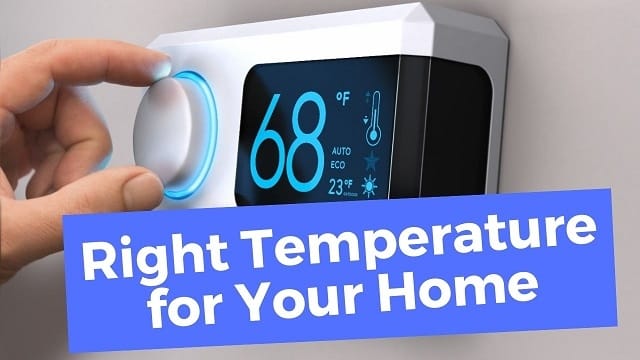The atmosphere that circulates throughout your household can vary depending on the time of year and the weather outside. For instance, the cold, winter months can bring dry, brittle, chilly air; on the other hand, the warm, summer months can bring moist, muggy, hot air. What’s more is that open window weather doesn’t stick around for long in most cities and towns due to the change of the seasons.
So, how do we determine the right temperature for our home with all these outdoor temperature changes creeping upon us? For starters, we have to work with what we have, meaning if it’s winter we have to kick the heat on and if it’s summer we have to cool the house down with the AC. That’s okay, though, because there’s a suggested temperature for both the cold and the hot months, and we’ll talk about that below.
What is the Suggested Right Temperature?
That question is easily answered; during the summer months, the recommended temperature for inside the house is 78 degrees F, and during the winter months, the recommended temperature for inside the house is 68 degrees F. Of course, these are merely suggestions that you do not have to abide by, but they will save you money and conserve some of the regular energy you typically use up throughout the house.
However, there are still times you’ll want to raise the heat or lower the AC, especially if temperatures are lower than usual or higher than usual.
What are Some of the Reasons for Raising the Heat and Lowering the AC?
Humidity may cause you to kick the air conditioning on and for a good reason; humid, muggy weather will get us to practically do anything, so long as it involves cooling our bodies down. On the other side of things, humidity is drained from the air during the winter months, causing our bodies to dry up and crave moisture. Though the heat may not bring the moisture back, it will feel like it’s bringing it back, hence our immediate reaction to turn the thermostat up.
Age and health also play a factor in determining whether the heat should be raised or the AC should be turned on. Many young people, elderly people, and people in poor health typically prefer to be warm, so they may want the temperatures inside to be a little higher than the recommended.
The homes size, layout, and orientation have a role in household temperatures. For instance, if the upstairs office is facing the south where a lot of sunlight is let in through the windows, you may not want to raise the heat all that much. On the other hand, if the upstairs office is towards the north, where the room hardly sees sunlight, you’ll want to raise the heat a little bit more absolutely.
What are some of the Reasons for not Raising the Heat and Lowering the AC?
Home occupancy is an important reason to keep in mind. Home occupancy will determine the times throughout the day that you will not raise the heat or lower the Ac, considering no one will be occupying the household. In all truth, using an excess amount of heat or air conditioning is a total waste of money and energy.
Are there Solutions for these Reasons or Problems?
To control humidity, you can adopt many solutions. Start by running a whole-house humidifier during the winter months to add moisture to the air. As far as the summer months go, start running exhaust fans to breathe fresh air into your home.
In general, you can install a zoning system. Zoning systems allow you to heat and cool different sections of the house at the same time. You can fluctuate temperatures depending on where the room is in the house, what the outside weather is like, and so much more. Program the temperature while you’re away or sleeping and change it to a more comfortable setting when your home and awake.
Try radiant floor heating. This energy-efficient method is effortless to run and gives you more space and freedom throughout the household. The system can be added effortlessly to all floor coverings, and it’s completely safe and easy to install.
You can always dress for the season; throw a sweater on and warm sweatpants to stay comfortable in the winter, and throw on some shorts and a tank top to cool your body down during the summer.
If you have curtains or other window coverings, you can use them to your advantage. During the summer months, close the curtains to remove the heat that the sun brings the room; during the winter months, open the curtains to add a little extra warmth to the room.
All in all, you’ll have to keep in mind everyone’s comfort levels in the household when you’re looking at the reasons and solutions for why you’re raising the heat or lowering the AC. The draftiness throughout your home should always be taken into account, along with your desire to save money and energy.
Once you’ve figured out those three categories, you’re in the clear to take your next step. What will you do to achieve the suggested right temperature in your household? Will you conserve energy and save money when given a choice?

